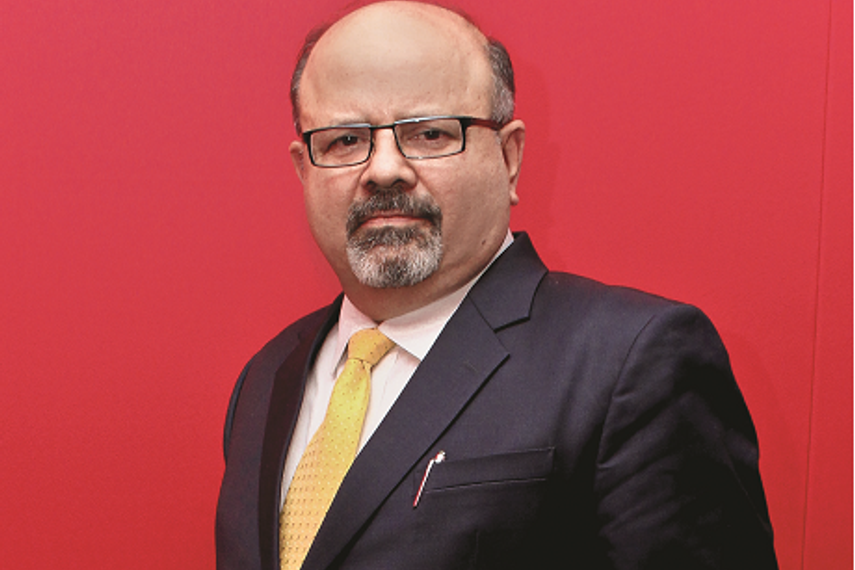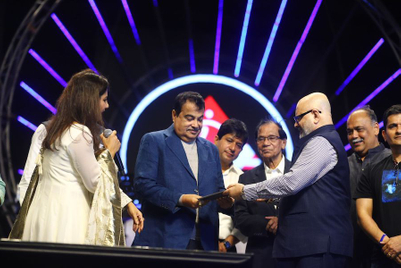
There are many facets to Harrish M Bhatia, CEO of My FM. He is credited with breaking even within three years of operation of DB Corp’s radio station. Launched in 2006, it currently operates 17 stations across Rajasthan, Haryana, Punjab, Gujarat, Maharashtra, Madhya Pradesh and Chhattisgarh, in tier II and III cities.
Bhatia has also penned a book ‘Jiyo Dil Se - Live Your Dream’, inspired by the tagline of the station, which is about the journey of transforming the station, its employees and everyone who came in contact with the station.
Prior to moving to radio, he was vice president, DB Corp (2001 to 2007), where he was counted upon for sales, marketing and operations for West and South for Dainik Bhaskar, Divya Bhaskar, and DNA. My FM radio channel, from the stable of Synergy Media Entertainment, a wholly owned company of the Bhaskar Group, promoted Bhatia from chief operating officer to chief executive officer in 2010. Before his switch to media, he spent many years in consumer durables, working with LG, Onida and Aristocrat.
“I had reached the top position in that sector. I was country head for appliances for LG. I wanted to explore something new, and hence got onto the media side of the business. I have successfully translated my learning with the consumer durable industries to grow media brands across print and radio of Dainik Bhaskar Group. From executing retailing efforts (much before India realised its power) to building My FM as an brand, I have enjoyed every bit of value added to the consumer,” he says.
The beginning
On the consumption patterns of radio, Bhatia says, “Newspaper is consumed before the shop opens, and TV is consumed after the shop closes. Radio and digital stay with you the whole day. These two mediums are witnessing high growth, and will grow because they are active, and open when the market is open. Also, these two mediums provide high engagement levels.”
Ceding that he had no idea about how radio functioned, Bhatia reminisces that the journey was not very smooth. However, he realised that it was something he really liked.
“Then I started enjoying this place. In between, I received many offers. Even the promoters asked me to move back to print but I refused. Radio, today, is exciting and challenging. In print and television, creatives are not in your control. In radio, you have that control. The industry will continue to grow and flourish till the time we have creatives in our hand,” he notes.
When Bhatia started steering the station, it had 550 people. Realising that people ‘earning the bread’ were lesser than the ‘people eating the bread’, he redesigned the business model and brought down the head count to 350.
“The idea was to be more efficient. It is a shoestring business model. We decided to switch off our studios post midnight in many markets, because we realised that hardly anyone listens to FM at 2 am. We have to be efficient and affordable all the time. The aim was to break even first and be profitable then,” he recalls.
After the round one of phase three auctions, My FM is set to become 30-station strong. Bhatia is positive that phase three will help the radio industry double in size. My FM will be entering Maharashtra with 10 stations barring Pune , and strengthen its reach in Gujarat, Rajasthan, Punjab and Haryana – in line with the promoters’ view of expanding radio footprint parallel to Dainik Bhaskar’s print footprint.
He awaits the second part of phase three that would give access to newer geographies. He says, it would be important from a reach and impact point-of-view.
My FM has also been consistently hiking its ad rates every year for the last three or four years. On an average, the endeavour is to increase it by at least 15 to 20 per cent, Bhatia claims.
“That is one of the reasons why we are growing, and why our EBITA is one of the highest in the industry. Till last year we were growing at 50 per cent more than the industry,” explains Bhatia, even while ceding that it is not comparable since most of My FM’s competitors are present in metros. “For us, our metros are Jaipur, Chandigarh, Indore, Bhopal,” he adds.
The highest contributing markets to My FM’s revenues include Indore, Bhopal, Jaipur, Raipur, Chandigarh and Ahmedabad, and the heaviest advertisers are from real estate, education and health.
Talent and trends
“When we started off, there was no talent in this industry. From then to now, we have done a good job of giving employment and retaining talent,” says Bhatia. He underlines that radio is one of the highest regulated sectors in India, even more than telecom – a factor that is hampering the growth of the medium, according to the CEO.
“One can understand the power of medium when one sees Narendra Modi use it for Mann ki Baat, how Obama won elections using this medium, and how Arvind Kejriwal is using this medium to deliver his messages to his advantage. Power of the medium is really huge, given the literacy rates are not very high. Where newspaper might not reach or TV might not work due to no electricity, radio has an access. The government is doing fairly good job to promote the radio industry, and I am positive that it will grow further,” he says.
Bhatia views every medium as a competition when it comes to advertising revenues, but is positive that one medium will not kill another. He states, “The market is growing, and growth will not come only from two traditional mediums. Newer avenues, and mediums, will grow the market. Tomorrow you will have many more internet radios, even today they are there. It will not replace the FM radio. Opportunities are there for all of us to stay together, and grow.”
Apart from concentrating on building a strong FM station, the company also focuses equally on non-FCT business, which is primarily events and activations. “This year we should be closing with 15 per cent of revenues from activations and events. We will expand further in this category. World over, this is how radio is growing,” he says.
Mentors and motivation
Bhatia is clearly inspired by KR Kim, former LG chief for his ‘clear thinking’.
“His thought was that if you cannot appraise an employee in numbers, you do not know why you have hired him. You need to translate talent into numbers, otherwise it is just subjective analysis. I also learnt from him to invest more in infrastructure rather than in manpower. Manpower is permanent cost. Infrastructure cost is just one-time investment, which will improve productivity, improve top line and bottom line numbers,” he explains.
He names the current promoters of DB Corp and Rajeev Karwal (founder director, Milagrow) for inspiring him with their speed of thinking, and working. “Some of this thinking I translated in my work – with breaking even in three years,” says Bhatia, adding that one should be agile as they grow.
It is readers who are more likely to turn authors and that holds true in Bhatia’s case. He even likes to add to the knowledge of his peers and employees, suggesting them books to read. My FM also does book reviews and presentations, internally, engaging employees.
People are a key focus area for him and the company. Bhatia notes that the organisation believes in giving ‘strong payouts’, and has a quarterly appraisal system to reward the team and keep its members motivated. They are, he realises, the first set of stakeholders who need to be tuned in.
(This article first appeared in the 1 April 2016 issue of Campaign India)


.jpg&h=334&w=500&q=100&v=20250320&c=1)
.jpg&h=334&w=500&q=100&v=20250320&c=1)

.jpg&h=334&w=500&q=100&v=20250320&c=1)


.jpg&h=334&w=500&q=100&v=20250320&c=1)




.JPG&h=268&w=401&q=100&v=20250320&c=1)


.jpg&h=268&w=401&q=100&v=20250320&c=1)
.jpg&h=268&w=401&q=100&v=20250320&c=1)


